Pros
Cons
Introduction
Product Overview
{{section_header}}{{section.name}}{{/section_header}}
Get to know the ATH-AD700s
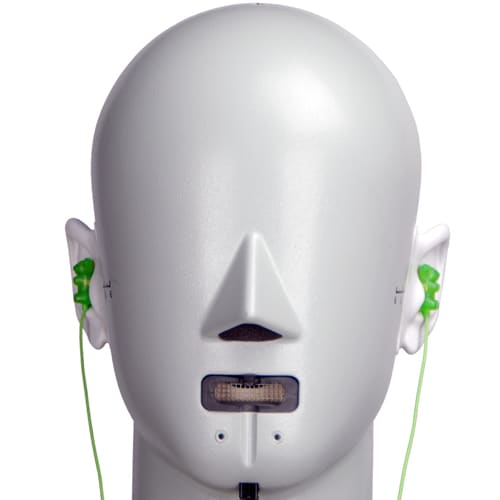
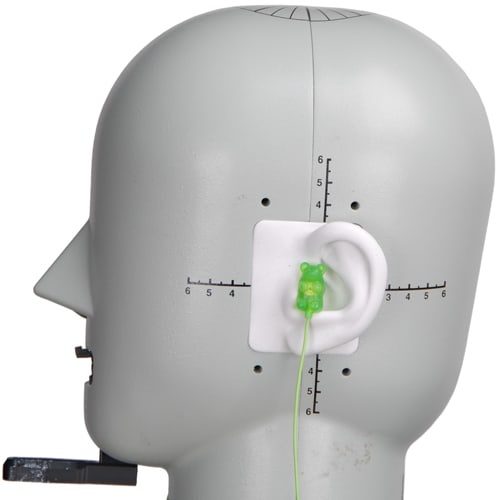
Speakers
{{section_header}}{{section.name}}{{/section_header}}
Behold the speaker element, guarded by a very thin mesh, and encircled by a rather oddly-shaped ear pad. This is removable, but a gigantic pain to put back on.
Back
{{section_header}}{{section.name}}{{/section_header}}
Here we see the interestingly-colored backing of the {{product.name}}. Guarded by a purple metal mesh, the open backs of these headphones let the open air hit the driver, so be careful to keep these cans at home.
Band
{{section_header}}{{section.name}}{{/section_header}}
Possibly the most unique thing about these headphones is the band design: they use two paddles to cradle your skull, and rely on the huge ear cups to disperse the small amount of pressure these cans will put on your head.
Cable
{{section_header}}{{section.name}}{{/section_header}}
The cable of the {{product.name}}s is 9.84 feet long (3 meters), and relatively boring. There are no in-line accessories, which is a positive for durability concerns, as there are fewer potential sources of breakage.
Terminating the longer cable of the {{product.name}} is your standard, 1/8th inch plug. There is a rather neat 1/4th inch adapter for home systems that screws onto the existing plug as well.
At the bottom of the left ear cup is the sole cord guard on the {{product.name}}s. Where many other higher-end headphones use a thick rubber guard, this one looks and feels much like heat shrink
In the Box
{{section_header}}{{section.name}}{{/section_header}}
The packaging contents of the {{product.name}} are rather sparse: all that you'll find inside are your headphones, the 1/4th inch adapter, and assorted documentation.
Durability
{{section_header}}{{section.name}}{{/section_header}}
Because these headphones have an open-backed design, you should be wary of taking them anywhere that isn't your computer or home setup. Why? Because open-backed cans let the open air touch the exposed speaker element, any flaws in the wiring could potentially cause a short and ruin your headphones, and the risk of this is much higher in humid or dirty air.
Additionally, the band has a bunch of moving parts, adding another point of possible failure. While these are impressive cans for the price, they won't last too long without some TLC.
Aesthetics
{{section_header}}{{section.name}}{{/section_header}}
It's an understatement to say that these are rather unique-looking cans, as they have a somewhat bizarre color scheme and interesting band design. Consequently, these headphones may not appeal to you if you don't like metallic beige and purple ear cup color.
Frequency Response
{{section_header}}{{section.name}}{{/section_header}}
For most of the range of audible frequencies, the {{product.name}}s actually keep a fairly flat response. Unfortunately, they do have a rather huge range of underemphasis from 700Hz to 8kHz. Thankfully, the underemphasis isn't as wild as it could has been, but it was enough outside of our ideal limits that it negatively impacted its score.
When listening to these cans, you may notice a rather sharp emphasis of higher-end cymbal crashes and sibilant sounds (f, s, sh sounds) that won't exactly be very consistent, due to the wild swing in emphasis near the 10kHz mark. It's certainly an oddity, but Audio-Technica is hardly the only headphone company to emphasize frequencies in this range to add the illusion of definition to higher-pitched instruments via emphasis of quieter sounds.

Click here for more information on our frequency response test.
Distortion
{{section_header}}{{section.name}}{{/section_header}}
These cans have a super-low distortion measure, and shouldn't leave you with any audible distortion. If you can hear distortion, you may need to do some troubleshooting with your setup at home.
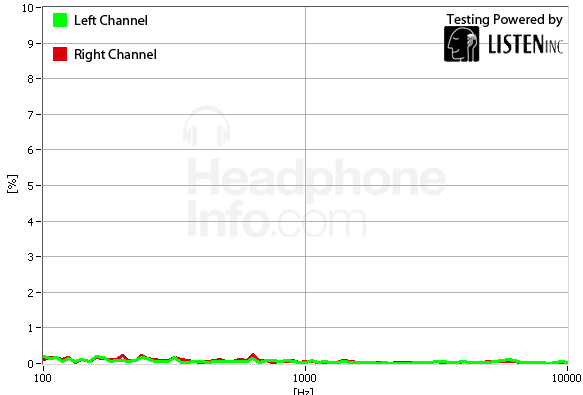
Click here for more information on our frequency response test.
Tracking
{{section_header}}{{section.name}}{{/section_header}}
Despite having a few extremely minor blemishes in its response, the {{product.name}}s have a very good tracking response. You won't hear the shifts in channel preference from left to right, even if you know what to look for.
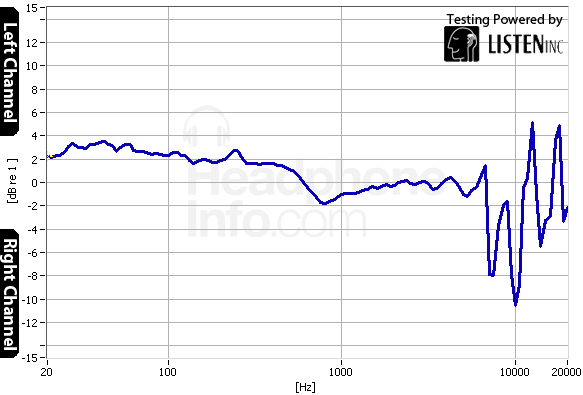
Click here for more information on our frequency response test.
Isolation
{{section_header}}{{section.name}}{{/section_header}}
Yes, we know this graph looks disappointing, but such is the reality of open-backed headphones: they let in almost every frequency sound virtually unimpeded. Keep in mind that if you're in a noisy room, you'll be able to hear just about anything that's going on around you.

Click here for more information on our isolation test.
Leakage
{{section_header}}{{section.name}}{{/section_header}}
The {{product.name}}s also leak a lot of sound due to the open backs. Be careful to listen at a low volume around other people, because they will get annoyed fairly quickly.
Click here for more information on our leakage test.
Maximum Usable Volume
{{section_header}}{{section.name}}{{/section_header}}
Listeners who like to bump their tunes very loudly might be excited to hear that the {{product.name}}s can output sound at 114.3dB without hitting a 3% level of distortion. Still, we advise all readers that listening to anything at this volume for extended periods of time is bad idea
Click here for more on our maximum usable volume test
Short-Term Use
{{section_header}}{{section.name}}{{/section_header}}
When you first plunk the {{product.name}}s down on your head, you'll notice that all the weight of these cans seem to disappear, and it's very easy to forget that you're wearing them. Audio-Technica loves this band design, it seems, as it appears on many of their "audiophile" branded headphones.

Extended Use
{{section_header}}{{section.name}}{{/section_header}}
Over time, the headphones do not put any appreciable amount of pressure on your head, and you're liable to forget that they're still there until you move. Consistent marks here.
Customizability
{{section_header}}{{section.name}}{{/section_header}}
Aside from changing the plug size with the included adapter, there really isn't a whole heck of a lot that you can do to customize your cans. There aren't any faceplates or extra cables, so what you see is what you get.
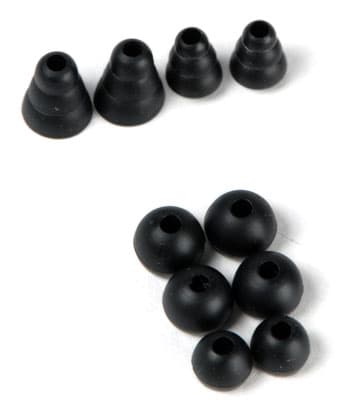
Cable Connectivity
{{section_header}}{{section.name}}{{/section_header}}
The 9.86 foot-long cable of the {{product.name}}s end in a regular ol' 1/8th inch plug, with a 1/4th inch adapter that screws right onto the plug assembly itself. There aren't any in-line accessories to add potential points of failure, so this cable is about as basic as it gets.
Portability
{{section_header}}{{section.name}}{{/section_header}}
Keep these at home. Even though they're about the most comfortable things you'll ever put on your head, fight the urge to listen to them outside, because you're in for a bad time if you do. Namely, you'll either crank the tunes up so much to drown out the unimpeded outside noise, or something will get into the drivers through the open backs and cook your cans. That is no bueno.
Maintenance
{{section_header}}{{section.name}}{{/section_header}}
If something happens to your cans, there really isn't a whole lot you can do to fix them unless you're good with a soldering iron. We wouldn't recommend that either, especially given how delicate these things can be.
Design
{{section_header}}{{section.name}}{{/section_header}}
By design, these two sets of headphones differ in color, and about nothing else. Still, the ATH-AD900s are a step-up performance-wise, and definitely look the part of high-end headphones.
Frequency Response
{{section_header}}{{section.name}}{{/section_header}}
Though the ATH-AD900s have hands-down the best frequency response between them, that of the {{product.name}} isn't too shabby either.
Distortion
{{section_header}}{{section.name}}{{/section_header}}
Neither set of cans has any issues with distortion.
Tracking
{{section_header}}{{section.name}}{{/section_header}}
Despite the minor errors in both tracking responses, you shouldn't be able to hear them in any capacity.
Isolation
{{section_header}}{{section.name}}{{/section_header}}
Because both sets of headphones are open-backed cans, they do not isolate you well at all.
Comfort
{{section_header}}{{section.name}}{{/section_header}}
Both have the same band and padding design, and you really can't go wrong with either here: they're some of the most comfortable over-ears on the market.
Verdict
{{section_header}}{{section.name}}{{/section_header}}
Both of these headphones are actually relatively close in price point, and extremely similar. If you'd like to save yourself a bunch of cash, the {{product.name}}s are a good bet, but the performance bump you get with the ATH-AD900s is marked and impressive. For $100 more, you can nab those cans that won our Selects Award in 2011.
Design
{{section_header}}{{section.name}}{{/section_header}}
Both sets of headphones are open-backed over ears, but only the {{product.name}}s have the radically-formed band, and ear cups that have a bit more play. On the plus side for the HD 558s, they do have a detachable cable, adding a considerable amount of life to the headphones.
Frequency Response
{{section_header}}{{section.name}}{{/section_header}}
The Sennheiser HD 558 maintains a much flatter frequency response overall, but the {{product.name}}s preserve the higher end better. It's a taste thing at this performance point.
Distortion
{{section_header}}{{section.name}}{{/section_header}}
Neither set of headphones has any problems with distortion worthy of note.
Tracking
{{section_header}}{{section.name}}{{/section_header}}
While both have minor, inaudible tracking errors, the HD 558s technically have fewer points of error.
Isolation
{{section_header}}{{section.name}}{{/section_header}}
Neither set of cans isolates very well, and should not be expected to do so.
Comfort
{{section_header}}{{section.name}}{{/section_header}}
While the HD 558s certainly aren't _un_comfortable, the {{product.name}}s have one of the best fits we've ever had the pleasure of enjoying.
Verdict
{{section_header}}{{section.name}}{{/section_header}}
This one comes down to user preference. While the HD 558s outperform the {{product.name}}s in frequency response, they go toe-to-toe in just about every other category but price; the {{product.name}}s are often found under $100, and the HD 558s are not. If you're looking to save some coin, both sets of headphones are great for the entry level, but the {{product.name}}s are more affordable.
Design
{{section_header}}{{section.name}}{{/section_header}}
While both are open-backed over ear headphones, the {{product.name}}s are much bigger, have a better band, and are generally more eccentric-looking. The Grados are jet black, and don't try to turn heads, which is a good thing, depending on what you like in headphones.
Frequency Response
{{section_header}}{{section.name}}{{/section_header}}
The Grados have the much flatter response overall, but the {{product.name}}s do tend to maintain some of the higher-frequency sounds in music a bit better.
Distortion
{{section_header}}{{section.name}}{{/section_header}}
The {{product.name}}s don't have any issues with distortion, whereas the SR60s have a couple very minor problems.
Tracking
{{section_header}}{{section.name}}{{/section_header}}
While the {{product.name}}s certainly aren't perfect here, they're far better than the SR60s in terms of channel preference errors.
Isolation
{{section_header}}{{section.name}}{{/section_header}}
Neither set of headphones was designed to attenuate noise, so they shouldn't be expected to. Keep both at home.
Comfort
{{section_header}}{{section.name}}{{/section_header}}
While the Grados aren't inherently uncomfortable, the {{product.name}}s are some of the most comfortable cans you can buy.
Verdict
{{section_header}}{{section.name}}{{/section_header}}
While both are at a similar price point in their life cycle, you get a lot more bang for your buck with the {{product.name}}s. While the Grado SR60s are pretty good for where they sit, the {{product.name}}s offer a value that's tough to compete with among entry-level open-backed headphones.
Conclusion
{{section_header}}{{section.name}}{{/section_header}}
Considering their price point in conjunction with their sound quality, the {{product.name}}s are a fantastic buy for novice audiophiles, or anyone looking for a good set of headphones for their tablet or computer at home. Additionally, they have a low enough impedance to work across a range of devices, but have a load capacity that will allow you to amplify your headphones if you so desire.
They aren't perfect, however, as they do show some rough edges in the frequency response. Still, for the price you'd pay, their excellently low distortion, decent tracking, and decent sensitivity make for a great set of entry-level cans. It doesn't hurt that they're super-comfortable, either.
While they've been on the market for quite a while now, they're still a relevant and interesting model of headphones for young or entry-level buyers. While their looks aren't for everyone, their performance should satisfy many.
Meet the tester
A seasoned writer and professional photographer, Chris reviews cameras, headphones, smartphones, laptops, and lenses. Educated in Political Science and Linguistics, Chris can often be found building a robot army, snowboarding, or getting ink.
Checking our work.
Our team is here to help you buy the best stuff and love what you own. Our writers, editors, and experts obsess over the products we cover to make sure you're confident and satisfied. Have a different opinion about something we recommend? Email us and we'll compare notes.
Shoot us an email

